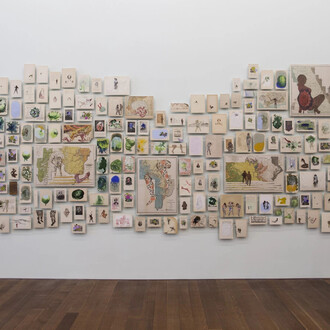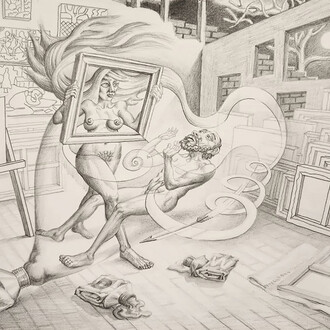Born in Shanghai and trained at the Shanghai College of Arts and Crafts, Xu Longsen is regarded as one of the most creative artists of his generation in China. While his work includes oil paintings and sculptures, it is his large-scale landscape paintings—or shanshui—created with traditional tools and materials that have earned him international acclaim.
The Chinese term shanshui is conventionally translated into English as landscape art, but this style of painting depicts not only a natural place but also an inner space where the artist can rest their heart and mind. Its birth can be traced to the 10th through 12th century, but some representational elements, such as mountains and forests, go back as far as the third and fourth centuries BC. The beauty of shanshui is imbued with both a certain mystic quality and regard for the role of the artist in society.
In taking on this age-old style, Xu identifies himself with the grand tradition of Chinese painting and philosophy even as he revolutionizes them. His work is groundbreaking not only in its sheer size—many paintings are over 30 feet tall—but in its unique installation that combines traditional Chinese ink painting with contemporary public spaces. Throughout history, few other Chinese artists have attempted to create and display their works on such a monumental scale. Xu’s depictions of mountains and water as well as humankind’s spiritual home are awe-inspiring.
This installation, Light of Heaven, was created specifically for the Art Institute’s galleries. It consists of a set of pillars painted with layers of ink wash along with a number of landscape paintings—all inspired by the mythological Mount Kunlun, home to many Chinese gods and goddesses.
















